Ten Moments That Shaped Red Dwarf
With the release of All The Shows we take a look at some influential RD history.
14 November, 2008
Every series of Red Dwarf is famed for its reinvention. Ask anyone to describe a 'typical' Red Dwarf and they'd be hard-pressed to do much more than compile aspects of various episodes. Hardly surprising of a show formula that was never fully locked down.
The constant rotation of settings, regular characters and story and joke styles has made for eight series packed with variety. And every series has featured some form of reinvention that took the show in a new direction.
For the sake of keeping the following list interesting, then, we're not going to include 'full series reformats' in this list of moments that shaped the future of the show. By that token, every opening episode would have to be included - representing the visual style changes of Series III and VII, say, or the full crew revival of Series VIII.
Instead we're looking for the seed-sowing starts that would pay off over and over as what begins as a single idea becomes something more vital to the continuing series.
If you're interested a more detailed look at the series-by-series changes, check out the Articles archive with analysis of Series I, Series II, Series III, Series IV, Series V, Series VI, Series VII and Series VIII.
1
A quantum probability of zero
The End
Lister is frozen in time and sci-fi comedy changes forever. The 'man out of time' isn't new - Buck Rogers is a famous example - and even the last man alive idea had been explored in things like Richard Matheson's I Am Legend.
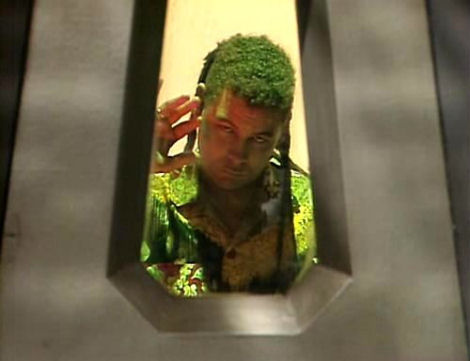
But what started out as a sitcom plot mechanic, as a way of trapping Lister with a scant few others aboard
a space ship, become a key part of the Red Dwarf mythology. But he's the last human alive
fans would rail whenever another human character threatened to show up.
More vitally, this massively influenced the way Lister functioned as both character and TV icon - as the final representative of his species he feels a weight of responsibility, to get back to Earth, to procreate, to self-improve; while we are able to see him as satire on either our own culture (humanity as schlubby waster) or typical science fiction (we're a long way from the qualified or unformed military sci-fi heroes that populated TV of the time).
2
Now you've got it in stereo, baby
Confidence & Paranoia
Oh how different it could have been. If, as originally planned, Lister had activated Kochanski's hologram disc then the whole shape of Red Dwarf would have been very different. Not just for the cast and story shake-up it would have given, but also because of the reason behind the writers' change of plan: the decision to create a new final episode.
That new episode, Me2, was the only script at that stage to draw directly from seeing the cast rehearsing - a key part of the Grant/Naylor writing process, and one which brought a noticeable energy to the last episode. From this point on, the guys would be playing to the show's strengths.
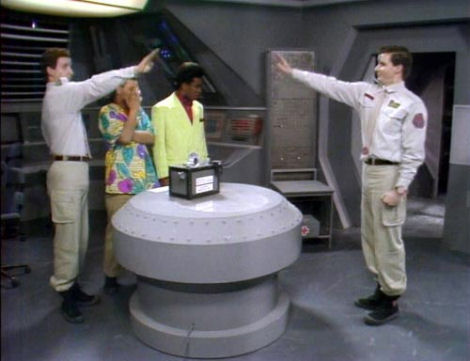
Me2 was also the most ambitious episode of show to date, at least in terms of logistics, relying on a mass of split screen work and a character playing against himself. (Boy would that become more familiar as the show went on.) The seeds were sown even earlier, in Future Echoes, but the whole thing came together the moment Lister put that disc into the Remote Projection Unit.
To get the full story of the lost Series I episode and the changes to Confidence & Paranoia check out the commentary and documentary content on The Bodysnatcher Collection DVD.
3
Swivel on it punk
Kryten
Originally created simply to serve the story, which required a character to be alive and crackers while the Nova 5's crew had rotted away, the rebellion of Kryten, and the general conflict the character brought to Lister and Rimmer, turned a guest character into a lead. When he came back the actor, costume and accent were different, but the conflict of the servile and rebellious remained. (See Lister rejecting his meal in The Last Day, or Kryten taking an opportunity to insult Rimmer at the end of White Hole.)
No wonder he was so popular, Kryten's origin story is one of the clearest emotional arcs the show has ever attempted - taking a character who begins as both hilarious and tragic, putting him through a battle for his will, and concluding with a successful triumph over oppression, the character heading off into the sunset to pursue his dream. The only tragedy is that, as with so many continuation stories, his return meant that the dream had to go unfulfilled.
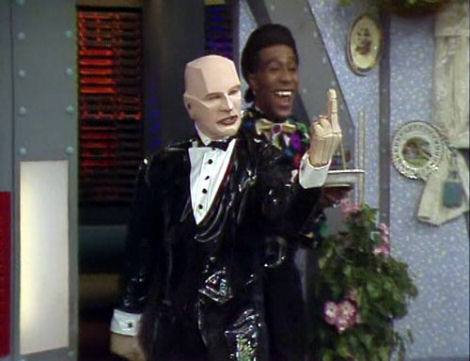
4
Rimmer's dad's died
Better Than Life
The emotional shape of Rimmer is brought into sharp focus with the arrival of a three million year-old letter. Up until this point Rimmer's only clearly defined tragedy had taken place on-screen, in an episode where he finally had to learn to literally live with himself - in Better Than Life a simple letter kicks off the first revelations of a powerful, ghastly and hysterical back-story.
As soon as you realise just what kind of childhood Rimmer had gone through - the insane father, the three brothers - his status as official ship's bastard makes a lot more sense. Old Arnie goes from frustrating antagonist to tragic hero in the course of a single scene, and every subsequent series would play all the better for that awareness.
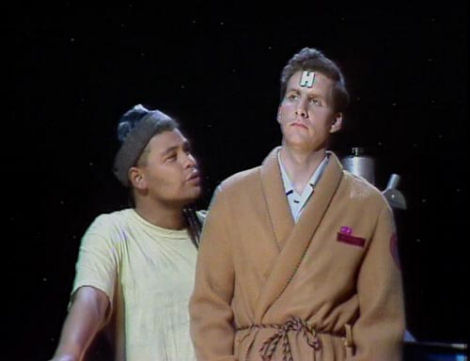
5
It's a parallel universe, innit?
Parallel Universe
The first step on the inter-dimensional ladder, though the word 'dimension' was a while away yet so we'll stick
to co-existing reality
for now. Again, it now seems like Red Dwarf had always been using this device
to fuel interesting stories, but Parallel Universe is where it all started.
As the series went on a 'gender-opposite' universe (well, for humans, at least) soon led to a reverse universe (Backwards), a reality where Rimmer is a hero (Dimension Jump), a universe where Kochanski, rather than Lister, was put in stasis (Ouroboros) and a reflected, mirror universe (Only the Good).
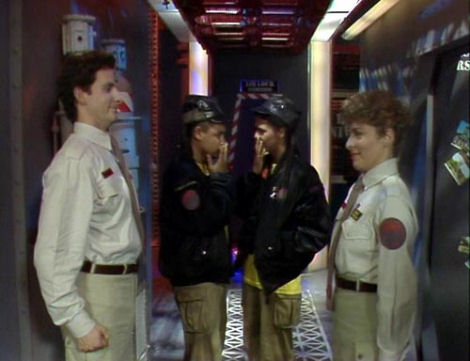
6
No it's from Earth - man-made
Polymorph
Finally solving the 'no aliens' problem that frustrated the writers in their early series, the team - having already got over their 'we don't want a robot' issues with Kryten - finally met their own logic half-way with GELFs.
Genetically Engineered Life-Forms allowed all the weird alien-esque monsters and societies they wanted, but with a strict rule that everything originated from life on Earth. While the acronym was another series away, the Polymorph was the first bit of biological tampering - leading to Camille the pleasure GELF, the Psirens and the primitive Kinitawowi, as well as, arguably, the mutton vindaloo beast and sentient virus Epideme.
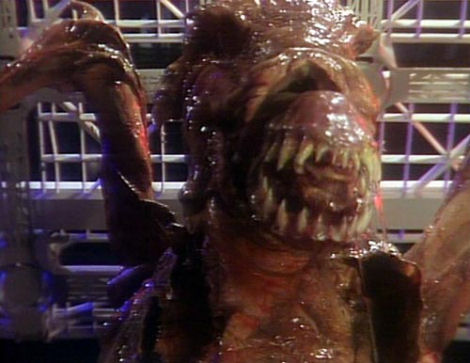
7
An enlightened 23rd century guy
DNA
Retrospective continuity abounds in Series IV - it's the first we hear of Rimmer's Hammond organ and telegraph pole hobbies - but it is in this episode that Lister's dialogue really spins things around. The show is brought from its original 21st century origins fully 200 years forward, making the science fiction developments decidedly more credible (and more in line with the novels).
More significantly, the Lister/Kochanski back-story is reworked to say that they dated before the accident. A choice that would add a layer of complexity to Lister's daydream/quest ('If he met her, would she even want him back?') and massively inform the resurrection of the character in Series VII.
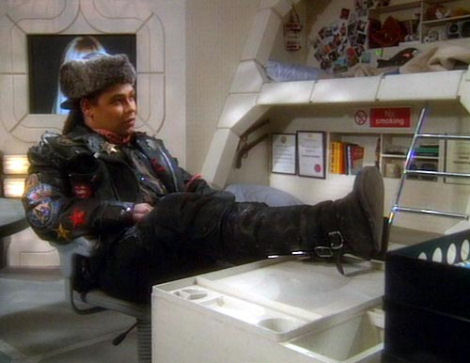
8
This is a very bad dream, right?
Back to Reality
Although the last episode recorded, everyone knew this was the show. Well, the writers did, anyway - everyone else was kinda terrified of the script.
A dark and unsettling story Back to Reality shocked with its plot twists and seems now to define the team's approach to the whole of Series V, in which Rimmer almost leaves as the crew audition the role of hologram, Lister and Kryten are erased from existence and replaced, Rimmer incarcerates and nearly kills the crew, and alternate versions of Rimmer, Cat, Lister and Kryten are all murdered.
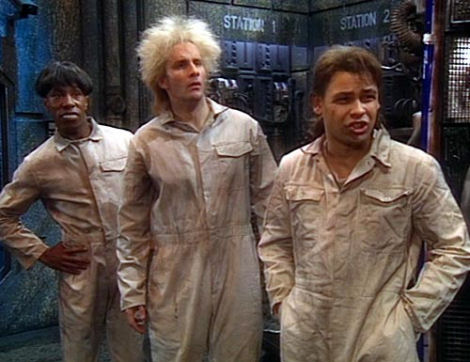
The pipe for the 'imagined reality' logic was laid in Series II's Better Than Life, including a twist ending that is essentially used again here and later reworked for Back in the Red - Part 3, but Back to Reality is the episode that does it all to perfection.
9
We have lost Red Dwarf
Psirens
Bending the rule about not including series openers for their 'reboot' qualities, this is here for the simple reason that 'basing the series on Starbug' is one thing, 'dumping a main character and the titular space ship' is something else.
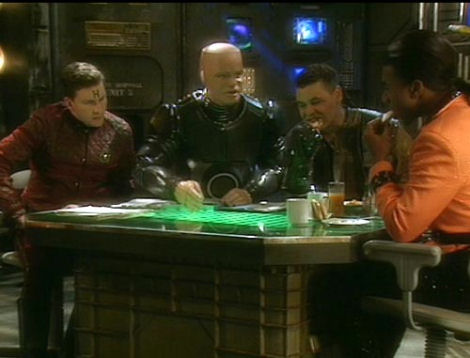
From here on, story-wise, anything became possible. There's a brave refusal of nostalgia to Series VI, a willingness to move forward even if it means eradicating key icons of the show. (Something the James Bond franchise would eventually brave a decade later.)
So while Psirens also set a definite formula for the next six episodes - an opening character scene, an emergency, a cockpit sequence, and the crew either landing or crashing Starbug - the real, lasting effect is one of courage. If you can go this far, you can go anywhere - as the later single-camera (VII) and repopulated (VIII) series would reveal.
10
You haven't been off this machine in a month
Gunmen of the Apocalypse
The introduction of AR gaming may have happened a long time ago, but the crew's access to a non-destructive version of the technology massively affected the nature of Red Dwarf to come. But it's not about the gaming tech - it's about the genre jumps it allowed the writers to take.
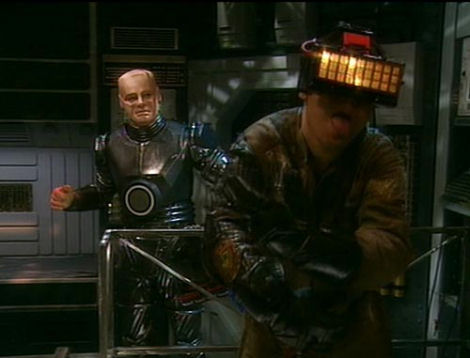
Gunmen allowed the writers to try their hands at new styles, to take the language and rules of, say, film noir and write something different and imaginative. We revelled in the Western, of course, and later shows would go further, with costume drama and medieval romps given a shot. Series VII would also chuck in a World War II action story - but none of these would have happened without Gunmen's epic-on-a-budget influence.
The original episodes are available as part of All The Shows or as part of the two- and three-disc editions - all available via the Merchandise section.














